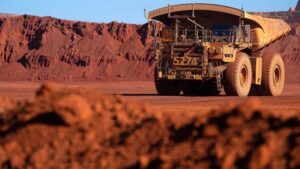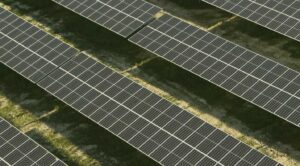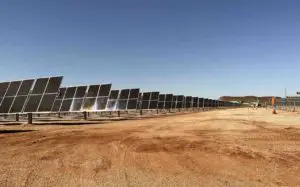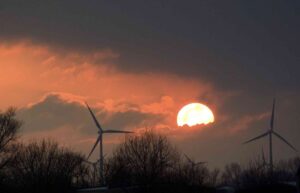Most states on Australia’s main grid experienced a significant jump in wholesale electricity prices in the June quarter, as record demand driven by cold weather, and a combination of coal outages, and lower wind and hydro output caused a greater reliance on gas, the country’s most expensive power technology.
The latest Quarterly Energy Dynamics report from the Australian Energy Market Operator finds that average prices across the National Electricity Market jumped by one quarter to $133 per megawatt hour (MWh) in the June quarter – the highest since the so-called energy crisis in 2022.
The worst affected state was NSW, which plays host to the biggest grid and the largest fleet of coal fired power generators, which experienced a three fold increase in the number of “baseload” plant failures.
These were particularly bad in May, where network constraints and bidding behaviour by big utilities cashing in on the tight market resulted in prices going to the market cap on repeated occasions. That bidding behaviour and market manipulation resulted in the market in NSW being suspended for the first time since 2022.
See our story: Energy retailers cash in and send consumer bills soaring
The bidding strategies are not illegal, it seems, but even the Australian Energy Regulator regulator questioned whether the behaviour was in the best interests of consumers.
AEMO estimates the events – the coal outages and the bidding that followed – accounted for $45/MWh of the $173/MWh average price in NSW in the June quarter. The AER, which measures the price slightly differently, puts the impact at $55/MWh on a $189/MWh cost.
Without those coal plant failures, and the bidding behaviour on numerous days by the country’s three biggest energy generators and retailers, the average price in NSW might have actually fallen in the June quarter, according to the AEMO data.
But the NSW state government has chosen to deepen its dependence on coal generation, and the bidding patterns of the big utilities, by agreeing to pay Origin Energy up to $450 million to keep the Eraring coal plant – which lost two units in the May feeding frenzy that caused the market to be suspended.
Elsewhere in the main grid, a significant fall in wind generation – down 20 per cent from the same period a year earlier – and a 16 per cent fall in hydro output led to a big increase in more costly gas generation in those states.
Average wholesale prices in Victoria jumped 43 per cent from the same quarter a year ago to $127/MWh, and by nearly 10 per cent to $135/MWh in South Australia. Average prices in Tasmania, which were worst affected by the drought that caused a reduction in hydro output, saw average wholesale prices nearly double to $131/MWh.
Only Queensland escaped the carnage. It has relatively little wind power at the moment – despite several gigawatt scale projects being built or planned – was less affected by the high pressure systems that caused a wind lull and its wind generation actually increased.
Queensland also benefits from a lot of solar in the middle of the day, and – because there is not enough transmission to export surplus solar during the day, and not yet enough battery storage – prices often fell below zero. Its average price fell 20 per cent from the same period last year although remained just above $100/MWh.
Western Australia prices also remained flat, as increases in wind, solar and rooftop PV offset growth in underlying demand and despite outages in its ageing coal and gas generators.
“Queensland and New South Wales wholesale prices have generally been above those in the southern regions, driven by a higher contribution of renewable energy in Victoria and South Australia,” AEMO chief executive Daniel Westerman said in a statement.
“In the last quarter, Victoria and South Australia experienced higher energy prices than Queensland, because lower output from wind and hydro generation was replaced by higher cost sources,” he said.
This has important implications for energy policy. The Labor strategy, and the AEMO planning blueprint, calls for more renewables and storage to reduce the shackles of the fossil fuel industry, the expensive gas plants in particular. They are seen as needed only in rare periods of high demand under their scenarios.
The federal Coalition, on the other hand, wants to keep coal fired power stations open longer, slow down or stop the rollout of wind, solar and storage, and use gas to fill in the missing bulk energy while they wait for nuclear plants to be built, possibly in the 2040s. Critics say that will lock Australia in to two decades of much higher emissions, and much higher prices.
One of the interesting developments in the latest quarter was the growing influence of battery storage – still at relatively low levels – but more than doubling its average generation in the morning and evening demand peaks, where it is playing an increasingly prominent role in the setting of prices.
AEMO noted that the price set by batteries declined markedly because of the increased capacity and competition in the market.
There are currently a huge number of very large batteries – some four or five time bigger than the current biggest battery – that will enter service in the next 12-18 months, which could have a further significant impact on the market. In California this spring and summer, battery storage has often been the biggest supplier of power in the evening peak demand periods.
AEMO noted that the weather in the June quarter was dominated by a series of persistent high-pressure systems sitting over southern Australia that caused extended periods of low surface winds. But distributed PV, mostly rooftop solar, jumped significantly to an average 2,050 MW over the quarter.
Because of the increased coal and gas output, NEM emissions in the second quarter increased by two million tonnes of CO2 equivalent to 30.7 million tonnes of CO2-e. At least the lights stayed on.








